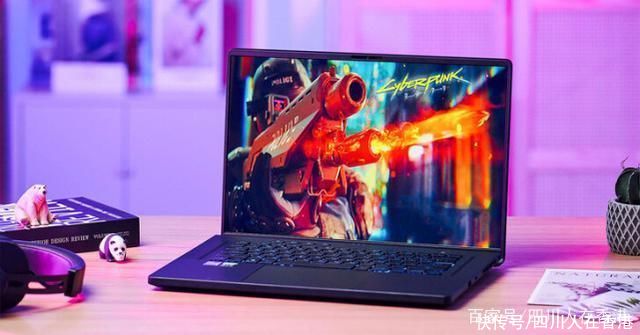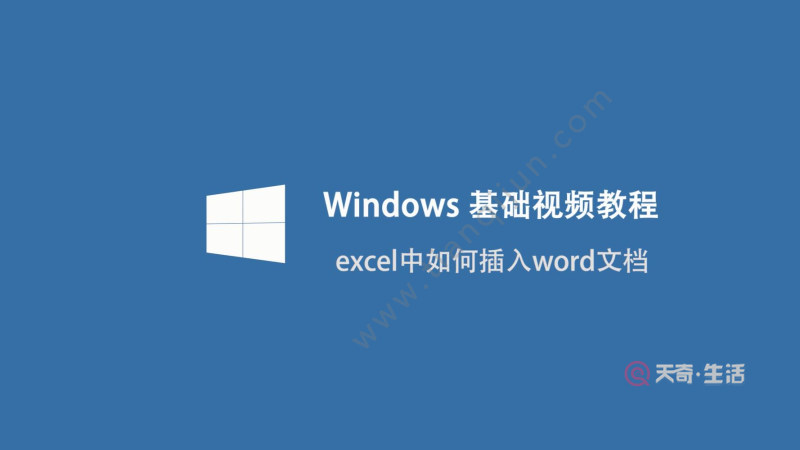иҝҷжҳҜжәҗз ҒпјҢйҖҡдҝ—жҳ“жҮӮпјҢе°ұиҙҙеҮәжқҘдәҶгҖӮ
package android.app;
import android.content.Context;
import android.content.res.Configuration;
import android.os.RemoteException;
import android.os.ServiceManager;
import android.util.Log;
/**
* иҝҷдёӘзұ»жҸҗдҫӣзі»з»ҹUIжЁЎејҸжңҚеҠЎзҡ„йҖ”еҫ„.иҝҷдёӘжңҚеҠЎе…Ғи®ёеә”з”ЁжҺ§еҲ¶и®ҫеӨҮзҡ„UIжЁЎејҸ.
* жҸҗдҫӣи®ҫзҪ®иЎҢиҪҰжЁЎејҸе’ҢеӨңй—ҙжЁЎејҸзҡ„еҠҹиғҪ.
*
* иҝҷдёӘеҠҹиғҪжҳҜжһ„е»әеңЁе№ҝж’ӯзҡ„еҹәзЎҖдёҠпјҡеҪ“з”ЁжҲ·жҠҠи®ҫеӨҮж”ҫиҝӣдёҖдёӘең°ж–№жҲ–д»ҺдёӯеҸ–еҮә
* {@link android.content.Intent#ACTION_DOCK_EVENT} .иҝҷдёӘж—¶еҖҷ,
* the UiModeManager дјҡеҲҮжҚўзі»з»ҹ {@link android.content.res.Configuration}
* иҝӣе…Ҙи®ҫзҪ® UI жЁЎејҸ, еҸ‘йҖҒиҝӣе…ҘжӯӨжЁЎејҸзҡ„е№ҝж’ӯ, 并且ејҖе§ӢеңЁйҖӮеә”жӯӨж—¶зҡ„жЁЎејҸ.
* еҸӮзңӢе№ҝж’ӯ {@link #ACTION_ENTER_CAR_MODE} е’Ң
* {@link #ACTION_ENTER_DESK_MODE} иҺ·еҸ–жӣҙеӨҡдҝЎжҒҜ.
*
* еҸҰеӨ–, з”ЁжҲ·д№ҹеҸҜд»ҘжүӢеҠЁеҲҮжҚўжЁЎејҸ.While in car mode -- whether by manual action
* from the user or being physically placed in a dock -- a notification is
* displayed allowing the user to exit dock mode.Thus the dock mode
* represented here may be different than the current state of the underlying
* dock event broadcast.
*
* дёҚеҸҜд»ҘзӣҙжҺҘе®һдҫӢеҢ–иҝҷдёӘзұ»;
йҖҡиҝҮ
* {@link android.content.Context#getSystemService
* Context.getSystemService(Context.UI_MODE_SERVICE)}иҺ·еҸ–иҝҷдёӘжңҚеҠЎ.
*/
public class UiModeManager {
private static final String TAG = "UiModeManager";
/**
* еҪ“и®ҫеӨҮUIиҝӣе…ҘиЎҢиҪҰжЁЎејҸпјҢеҸ‘йҖҒе№ҝж’ӯ, either
* by being placed in a car dock or explicit action of the user.After
* sending the broadcast, the system will start the intent
* {@link android.content.Intent#ACTION_MAIN} with category
* {@link android.content.Intent#CATEGORY_CAR_DOCK}
* to display the car UI, which typically what an application would
* implement to provide their own interface.However, applications can
* also monitor this Intent in order to be informed of mode changes or
* prevent the normal car UI from being displayed by setting the result
* of the broadcast to {@link Activity#RESULT_CANCELED}.
*/
public static String ACTION_ENTER_CAR_MODE = "android.app.action.ENTER_CAR_MODE";
/**
* еҪ“и®ҫеӨҮUIзҰ»ејҖиЎҢиҪҰжЁЎејҸеӣһеҲ°жӯЈеёёжЁЎејҸпјҢеҸ‘йҖҒе№ҝж’ӯ.Typically used by a car mode app, to dismiss itself
* when the user exits car mode.
*/
public static String ACTION_EXIT_CAR_MODE = "android.app.action.EXIT_CAR_MODE";
/**
* Broadcast sent when the device's UI has switched to еӨңй—ҙжЁЎејҸ,
* by being placed in a desk dock.After
* sending the broadcast, the system will start the intent
* {@link android.content.Intent#ACTION_MAIN} with category
* {@link android.content.Intent#CATEGORY_DESK_DOCK}
* to display the desk UI, which typically what an application would
* implement to provide their own interface.However, applications can
* also monitor this Intent in order to be informed of mode changes or
* prevent the normal desk UI from being displayed by setting the result
* of the broadcast to {@link Activity#RESULT_CANCELED}.
*/
public static String ACTION_ENTER_DESK_MODE = "android.app.action.ENTER_DESK_MODE";
/**
* Broadcast sent when the device's UI has switched зҰ»ејҖеӨңй—ҙжЁЎејҸеӣһеҲ°жӯЈеёёжЁЎејҸ.Typically used by a desk mode app, to dismiss itself
* when the user exits desk mode.
*/
public static String ACTION_EXIT_DESK_MODE = "android.app.action.EXIT_DESK_MODE";
/** Constant for {@link #setNightMode(int)} and {@link #getNightMode()}:
* automatically switch night mode on and off based on the time.
*/
public static final int MODE_NIGHT_AUTO = Configuration.UI_MODE_NIGHT_UNDEFINED >> 4;
/** Constant for {@link #setNightMode(int)} and {@link #getNightMode()}:
* never run in night mode.
*/
public static final int MODE_NIGHT_NO = Configuration.UI_MODE_NIGHT_NO >> 4;
/** Constant for {@link #setNightMode(int)} and {@link #getNightMode()}:
* always run in night mode.
*/
public static final int MODE_NIGHT_YES = Configuration.UI_MODE_NIGHT_YES >> 4;
private IUiModeManager mService;
/*package*/ UiModeManager() {
mService = IUiModeManager.Stub.asInterface(
ServiceManager.getService(Context.UI_MODE_SERVICE));
}/**
* Flag for use with {@link #enableCarMode(int)}: go to the car
* home activity as part of the enable.Enabling this way ensures
* a clean transition between the current activity (in non-car-mode) and
* the car home activity that will serve as home while in car mode.This
* will switch to the car home activity even if we are already in car mode.
*/
public static final int ENABLE_CAR_MODE_GO_CAR_HOME = 0x0001;
/**
* Flag for use with {@link #enableCarMode(int)}: allow sleep mode while in car mode.
* By default, when this flag is not set, the system may hold a full wake lock to keep the
* screen turned on and prevent the system from entering sleep mode while in car mode.
* Setting this flag disables such behavior and the system may enter sleep mode
* if there is no other user activity and no other wake lock held.
* Setting this flag can be relevant for a car dock application that does not require the
* screen kept on.
*/
public static final int ENABLE_CAR_MODE_ALLOW_SLEEP = 0x0002;
/**
* дҪҝи®ҫеӨҮиҝӣе…ҘиЎҢиҪҰжЁЎејҸ, like it had been placed in the car dock.
* This will cause the device to switch to the car home UI as part of
* the mode switch.
* @param flags еҝ…йЎ»дёә 0.
*/
public void enableCarMode(int flags) {
if (mService != null) {
try {
mService.enableCarMode(flags);
} catch (RemoteException e) {
Log.e(TAG, "disableCarMode: RemoteException", e);
}
}
}/**
* Flag for use with {@link #disableCarMode(int)}: go to the normal
* home activity as part of the disable.Disabling this way ensures
* a clean transition between the current activity (in car mode) and
* the original home activity (which was typically last running without
* being in car mode).
*/
public static final int DISABLE_CAR_MODE_GO_HOME = 0x0001;
/**
* еҰӮжһңеҪ“еүҚеңЁиЎҢиҪҰжЁЎејҸпјҢе…ій—ӯиҝҷдёӘжЁЎејҸ.еҸӮж•°еҸҜд»Ҙдёә0пјҡйҖҖеҮәжӯӨжЁЎејҸпјӣDISABLE_CAR_MODE_GO_HOMEпјҡйҖҖеҮәжӯӨжЁЎејҸ并иҝ”еӣһжЎҢйқў
* @param flags May be 0 or {@link #DISABLE_CAR_MODE_GO_HOME}.
*/
public void disableCarMode(int flags) {
if (mService != null) {
try {
mService.disableCarMode(flags);
} catch (RemoteException e) {
Log.e(TAG, "disableCarMode: RemoteException", e);
}
}
}/**
* иҝ”еӣһеҪ“еүҚиҝҗиЎҢзҡ„жЁЎејҸ.еҸҜд»Ҙдёәпјҡ
* {@link Configuration#UI_MODE_TYPE_NORMAL Configuration.UI_MODE_TYPE_NORMAL},
* {@link Configuration#UI_MODE_TYPE_DESK Configuration.UI_MODE_TYPE_DESK},
* {@link Configuration#UI_MODE_TYPE_CAR Configuration.UI_MODE_TYPE_CAR},
* {@link Configuration#UI_MODE_TYPE_TELEVISION Configuration.UI_MODE_TYPE_TELEVISION},
* {@link Configuration#UI_MODE_TYPE_APPLIANCE Configuration.UI_MODE_TYPE_APPLIANCE}, or
* {@link Configuration#UI_MODE_TYPE_WATCH Configuration.UI_MODE_TYPE_WATCH}.
*/
public int getCurrentModeType() {
if (mService != null) {
try {
return mService.getCurrentModeType();
} catch (RemoteException e) {
Log.e(TAG, "getCurrentModeType: RemoteException", e);
}
}
return Configuration.UI_MODE_TYPE_NORMAL;
}/**и®ҫзҪ®еӨңй—ҙжЁЎејҸгҖӮеңЁAPI22еҸҠд»ҘдёӢеҪ“еңЁи®ҫеӨҮдёҠеҗҢж—¶д№ҹи®ҫзҪ®дәҶиЎҢиҪҰжЁЎејҸжҲ–жЎҢйқўжЁЎејҸпјҢеӨңй—ҙжЁЎејҸжүҚдјҡз”ҹж•ҲгҖӮеңЁAPI23еҸҠд»ҘдёҠеҲҷжІЎжңүиҝҷдёӘйҷҗеҲ¶
*
* жЁЎејҸеҸҜд»Ҙдёә:
*
*- {@link #MODE_NIGHT_NO} - ж—Ҙй—ҙжЁЎејҸ
*mode.
*- {@link #MODE_NIGHT_YES} - еӨңй—ҙжЁЎејҸ.
*
*- {@link #MODE_NIGHT_AUTO} - иҮӘеҠЁеҲҮжҚўпјҢж №жҚ®и®ҫеӨҮдҪҚзҪ®еҸҠзӣёе…ідј ж„ҹеҷЁ.
*
*/
public void setNightMode(int mode) {
if (mService != null) {
try {
mService.setNightMode(mode);
} catch (RemoteException e) {
Log.e(TAG, "setNightMode: RemoteException", e);
}
}
}/**
* @return иҝ”еӣһеҪ“еүҚй…ҚзҪ®зҡ„еӨңй—ҙжЁЎејҸ. May be one of
*{@link #MODE_NIGHT_NO}, {@link #MODE_NIGHT_YES},
*{@link #MODE_NIGHT_AUTO}, or -1 on error.
*/
public int getNightMode() {
if (mService != null) {
try {
return mService.getNightMode();
} catch (RemoteException e) {
Log.e(TAG, "getNightMode: RemoteException", e);
}
}
return -1;
}
}йҷӨдәҶеңЁд»Јз ҒдёӯиҝӣиЎҢзӣёе…ій…ҚзҪ®еӨ–пјҢеңЁxmlж–Ү件иҝӣиЎҢеёғеұҖж—¶пјҢеҗҢж—¶еҸҜд»ҘиҝӣиЎҢзӣёе…іжЁЎејҸзҡ„еёғеұҖпјҢеҚіеңЁзӣёеҗҢеёғеұҖеҗҚеҗҺйқўеҠ дёӘеҗҺзјҖе°ұеҸҜд»ҘдәҶпјҢиҝҷж ·е°ұжҢҮе®ҡдәҶзӣёе…іжЁЎејҸзҡ„UIй…ҚзҪ®гҖӮиҝҷжҳҜжңҖз®ҖеҚ•зҡ„еҲҮжҚўжЁЎејҸзҡ„дёҖз§Қе®һзҺ°йҖ”еҫ„гҖӮ
гҖҗAndroid|UiModeManager жңҖз®ҖеҚ•еҲҮжҚўжЁЎејҸзҡ„йҖ”еҫ„гҖ‘зӣёе…іеҗҺзјҖеҸӮиҖғAPIжҢҮеҚ—жҸҗдҫӣиө„жәҗйғЁеҲҶгҖӮ











